









地质地学 地下地质 地质地貌 水文地质 地壳 地层 地球 地球物理 地震 地磁 地质灾害 岩石 地质构造 地质年代 地质剖面 地质遗迹 地质景观 地质插图 地质侵蚀 地质异变 地质景观 地质地貌 地质灾害 地质地貌 地质地貌 地质地貌 地质地貌 地质地貌 地质地貌 地质地貌 地质地貌
1. "地质地学:The study of the solid Earth, including its composition, structure, and history." Used in academic research and textbooks. Example: "Geologists use geological data to reconstruct the Earth's history." 2. "地下地质:The study of the Earth's subsurface, including rocks, minerals, and fossils." Used in resource exploration and engineering. Example: "Mapping of underground geological structures is important for locating potential mineral deposits." 3. "地质地貌:The study of the Earth's surface features and processes, including mountains, valleys, and oceans." Used in geography and environmental science. Example: "Glaciers are a dominant feature of alpine地貌." 4. "水文地质:The study of the distribution and movement of water in the Earth's subsurface." Used in hydrology and civil engineering. Example: "Water wells are drilled into the ground to access地下水." 5. "地壳:The outermost layer of the Earth, including the lithosphere and the asthenosphere." Used in geology and seismology. Example: "The movement of the Earth's tectonic plates can cause earthquakes." 6. "地层:A set of rocks of similar age and origin, arranged in a stratified sequence." Used in sedimentology and paleontology. Example: "Fossils are often found in specific geological layers." 7. "地球:The third planet from the sun, the only known planet to support life." Used in astronomy and geophysics. Example: "The Earth's rotation causes the cycle of day and night." 8. "地球物理:The study of the physical properties of the Earth and its environment, including gravity, magnetism, and seismology." Used in geophysics and exploration. Example: "Seismic waves can be used to map the Earth's interior." 9. "地震:A sudden release of energy in the Earth's crust, resulting in seismic waves and ground shaking." Used in seismology and disaster response. Example: "Earthquakes can cause significant damage to buildings and infrastructure." 10. "地磁:The magnetic field of the Earth, generated by the movement of molten iron in the outer core." Used in geophysics and navigation. Example: "Magnetic storms on the Sun can affect the Earth's magnetic field." 11. "地质灾害:Natural disasters caused by geological processes, such as earthquakes, landslides, and volcanic eruptions." Used in disaster management and risk assessment. Example: "Landslides are a common geological hazard in mountainous areas." 12. "岩石:固态矿物,包括矿物,岩石碎屑,沉渣,生物化石和岩石矿物等。" Used in mineralogy, petrology and geology. Example: "The study of rocks is an important part of understanding the Earth's history." 13. "地质构造:地壳的结构,包括岩石,地层和地质构造特征,如褶皱,断层和地堑。" Used in geology and structural engineering. Example: "The study of geological structures helps us understand how the Earth's crust has changed over time." 14. "地质年代:地壳中岩层的时代,是用来划分和比较不同地质时期的单位。" Used in geology and paleontology. Example: "The Cretaceous period is one of the six major geological eras." 15. "地质剖面:地质剖面是地壳中的一种剖面图,展现了地壳中不同岩层和地质构造的状况。" Used in geology and structural engineering. Example: "Geological sections are often used to study the structure of the Earth's crust." 16. "地质遗迹:地质历史遗迹,如化石,火山口,沉积岩等。" Used in paleontology, geology and tourism. Example: "The Grand Canyon is a renowned geological landmark." 17. "地质景观:地壳中的景观,如山脉,峡谷,湖泊,河流等。" Used in geography, environmental science and tourism. Example: "The Himalayas are one of the most spectacular geological landscapes in the world." 18. "地质插图:使用图形表示地质概念,如地壳剖面,地质结构图等。" Used in geology and education. Example: "Geological diagrams are often used to illustrate complex geological concepts." 19. "地质侵蚀:地球表面的侵蚀,由水,风,冰,化学作用等引起。" Used in geomorphology, hydrology and engineering. Example: "Erosion by water can change the shape of river valleys over time." 20. "地质异变:地质过程中的突然变化,如地震,火山喷发,地壳运动等。" Used in seismology, volcanology and geophysics. Example: "Volcanic eruptions can cause significant地质异变." 21. "地质景观地貌:地貌形成是地壳中的自然过程,如风蚀,流水侵蚀,冰川侵蚀,地壳运动等。
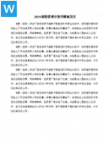
忽隐忽现、忽冷忽热、忽高忽低、忽大忽小、忽前忽后、忽左忽右、忽明忽暗、忽上忽下$$$1. 忽隐忽现:出自《西游记》。古代传说中,神仙的法力可以忽隐忽现,变幻莫测。 用法:描述某种事物的不确定性和变化无常。 创作一句话:他的笑容总是忽隐忽现,...
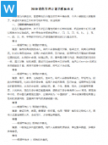
1. 盼望 2. 盼头 3. 盼顾 4. 盼待 5. 盼睐 6. 盼想 7. 盼盼 8. 盼瞩 9. 盼意 10. 盼待 11. 盼睐 12. 盼想 13. 盼盼 14. 盼瞩 15. 盼意$$$1. 盼望 - ...
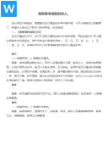
1. 祝贺 2. 庆贺 3. 庆祝 4. 祝福 5. 欢祝 6. 雅祝 7. 酩酊祝词 8. 酩酊祝辞 9. 短寿祝词 10. 长寿祝词 11. 寿比南山祝词 12. 寿比南山祝辞 13. 祝寿词 14. 祝寿辞 15. 祝寿序 16. 祝...
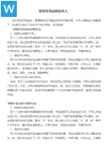
何的词语有很多,以下是一些比较常见的: 1. 何时 2. 何地 3. 何事 4. 何故 5. 何如 6. 何曾 7. 何必要 8. 何等 9. 何以 10. 为何 11. 何间 12. 何人 13. 何方 14. 何须 15. 何止 16....
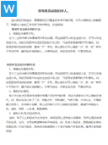
1. 弯曲、蜿蜒、弯曲、歪曲、弯曲、弯曲、曲折、弯曲、弯曲、弯曲 2. 弓形、拱形、弯曲、弯曲、弯曲、弯曲、弯曲、弯曲、弯曲、弯曲 3. 弯曲、弯曲、弯曲、弯曲、弯曲、弯曲、弯曲、弯曲、弯曲、弯曲 4. 弯曲、弯曲、弯曲、弯曲、弯曲、弯曲、...
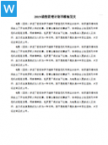
1. 铜绿:主要成分是碱式碳酸铜,呈绿色。也叫孔雀石。 2. 铜鼓:古代壮族、苗族和畲族等少数民族的打击乐器,流行于我国广西、云南、广东、贵州、湖南等省区。 3. 铜版:一种印版。用铜制成。常用来印制图片、照片等。 4. 铜注:铜铸的器皿或...
Copyright @ 好写作网 All Rights Reserved. 版权所有 粤ICP备2023147452号-1